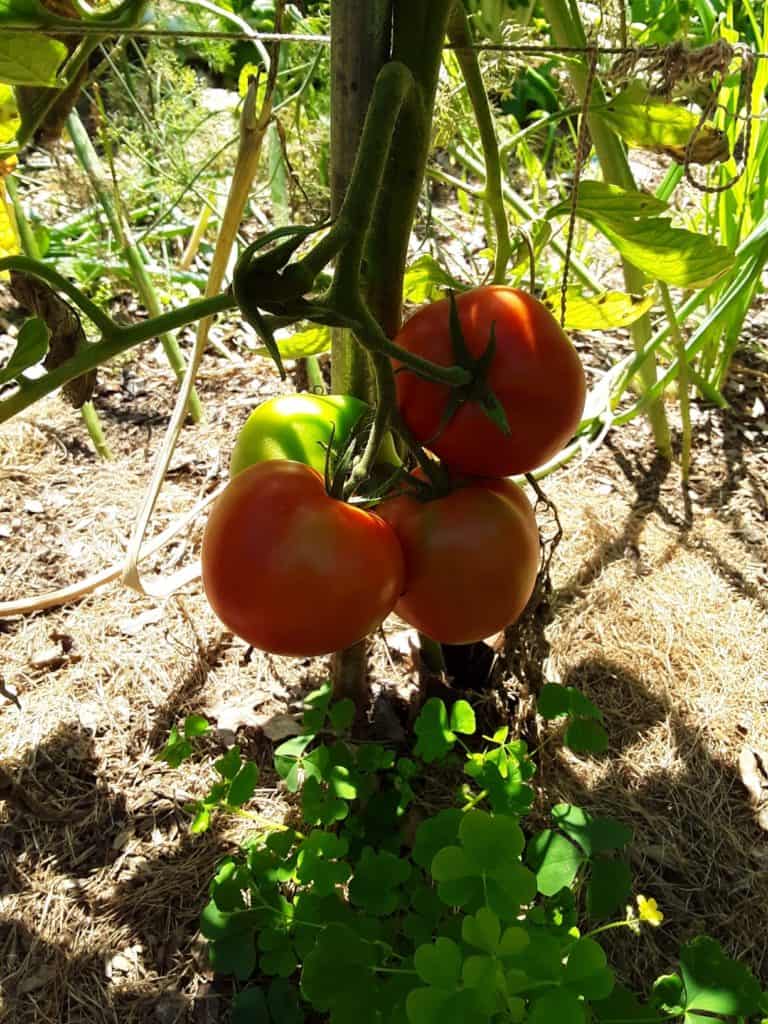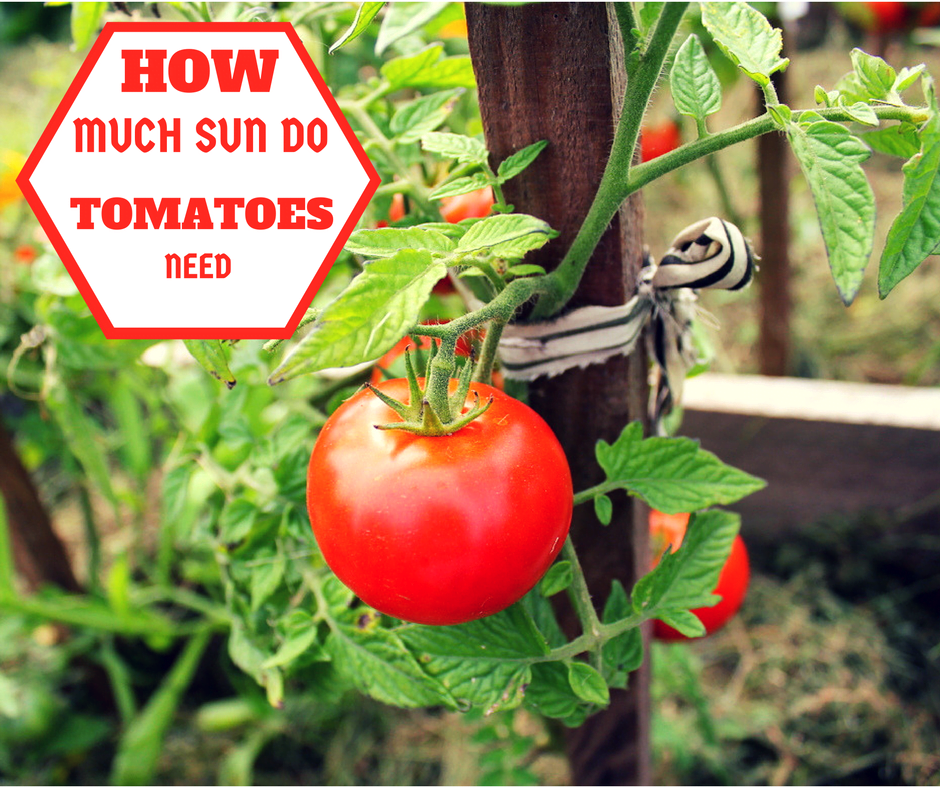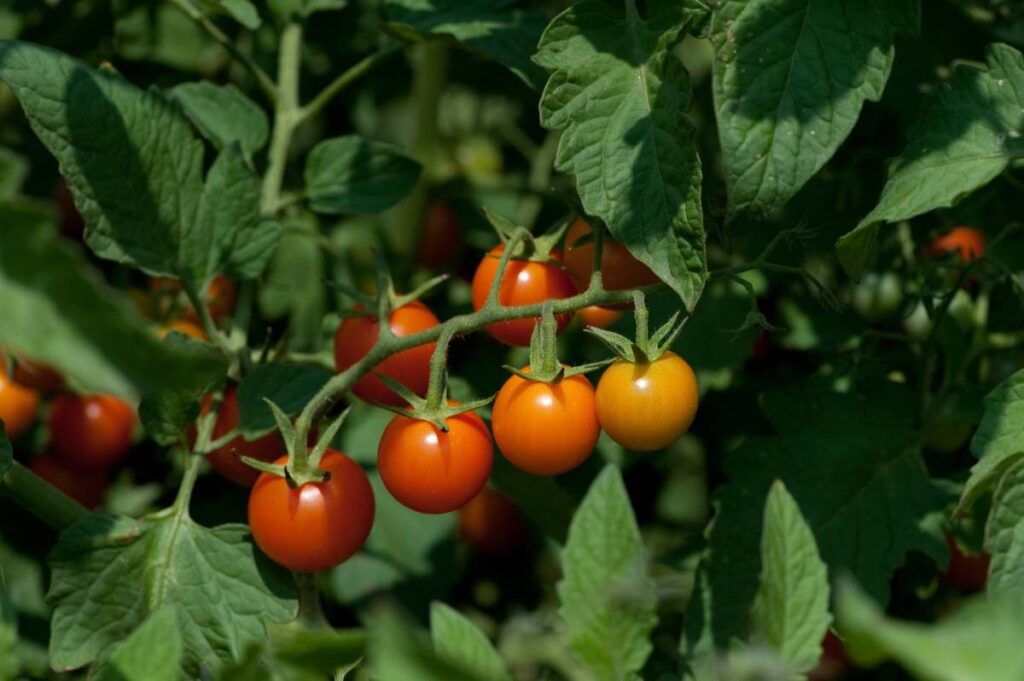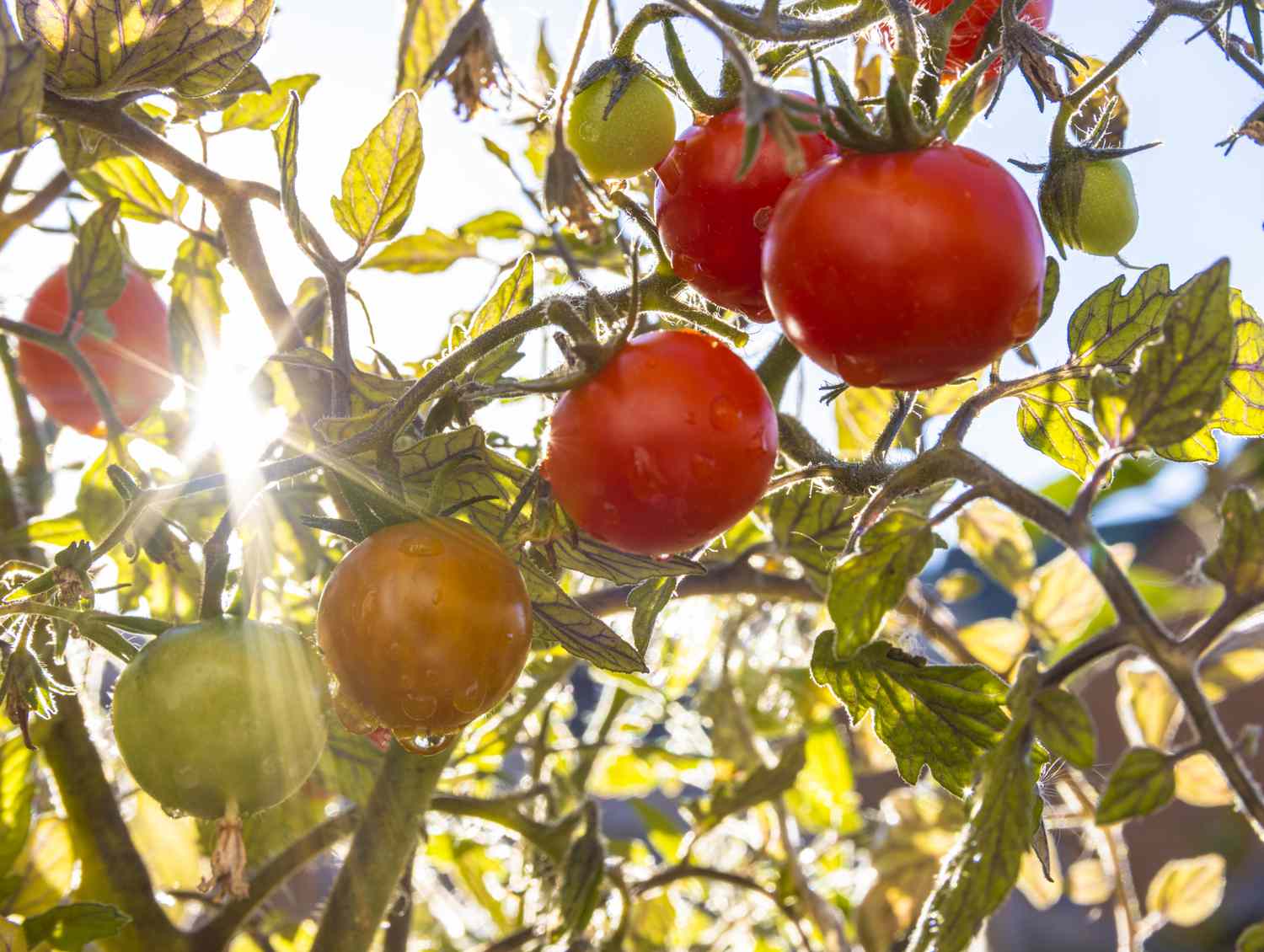Direct sunlight is an essential source of energy for plants, but recent studies have raised concerns about its potential negative effects on tomatoes. With tomatoes being an indispensable ingredient in our daily culinary endeavors, understanding the impact of direct sunlight on their growth and development is crucial. Through a comprehensive analysis of existing research and experimentation, this article aims to explore the potential benefits and drawbacks of exposing tomatoes to direct sunlight, shedding light on whether this natural source of energy is truly harmful or beneficial for their overall health and productivity.

Effects of Direct Sunlight on Tomatoes
Sunburn on Tomatoes
Direct sunlight can have detrimental effects on tomato plants, particularly in the form of sunburn. Sunburn occurs when tomatoes are exposed to intense sunlight for prolonged periods without any form of protection. The ultraviolet (UV) radiation in direct sunlight can cause the tomatoes’ skin to become blistered and discolored, leading to a decline in fruit quality. Sunburnt tomatoes may also develop a leathery texture and taste unpleasant. It is crucial to take measures to protect tomatoes from excessive sun exposure to avoid sunburn.
Temperature Stress
Another significant effect of direct sunlight on tomatoes is temperature stress. Tomatoes are sensitive to extreme temperatures, especially intense heat. When tomatoes are exposed to direct sunlight for extended periods without proper shade or protection, the excessive heat can increase the temperature of the plant tissues. This rise in temperature can disrupt the biochemical processes within the plant and negatively impact its overall growth and development. In severe cases, prolonged exposure to high temperatures can lead to the wilting and even death of tomato plants.
Drought Stress
Direct sunlight can exacerbate drought stress in tomato plants, leading to water deficiency and dehydration. The intense heat from the sun increases the evaporation rate and transpiration of water in the plants. As a result, tomatoes may struggle to extract and retain an adequate amount of water from the soil, causing moisture imbalance within their tissues. This drought stress can manifest in symptoms such as wilting, stunted growth, and a reduction in fruit yield. Proper watering techniques and providing shade can help mitigate the effects of drought stress caused by direct sunlight.
Flower Drop
Direct sunlight can also contribute to flower drop in tomato plants. Flowers are critical for the successful production of tomatoes, as they are responsible for pollination and subsequent fruit set. However, excessive exposure to direct sunlight can cause the flowers to drop prematurely, leading to a decrease in fruit production. The intense heat and light can disrupt the delicate hormonal balance within the plant, interfering with the natural process of flower formation and retention. Adequate shade provision and managing light exposure can help prevent flower drop and promote better fruit set.
Uneven Ripening
Direct sunlight can have an uneven ripening effect on tomatoes, causing variations in color and texture across the fruit. When tomatoes are exposed to intense, direct sunlight, the areas directly facing the sun may ripen more quickly and unevenly compared to the shaded areas. This uneven ripening can result in patches of underripe and overripe sections within the same fruit, affecting its overall quality and taste. Controlling sun exposure through shading techniques can help promote more uniform ripening and enhance the overall market value of tomatoes.
Reduced Fruit Size
Excessive direct sunlight can lead to a reduction in the size of tomato fruits. The intense heat and light can accelerate the metabolic activity within the plant, causing an increase in energy consumption. This heightened energy demand can result in the diversion of nutrients away from fruit development towards sustaining the plant’s survival. As a result, tomato fruits may fail to reach their optimal size and may appear smaller than expected. By minimizing direct sunlight exposure and optimizing shade conditions, the size of tomato fruits can be preserved and enhanced.
Damage to Foliage
Direct sunlight can cause damage to tomato foliage, leading to a decline in plant health and productivity. The intensity of the sun’s rays can scorch the leaves, causing them to turn yellow or brown, wilt, and eventually die. Sun-damaged foliage will have a reduced capacity for photosynthesis, impeding the plant’s ability to produce and store energy necessary for growth. Furthermore, damaged leaves are more susceptible to diseases and pest infestations, further compromising the plant’s overall well-being. Proper shade provision and regular monitoring of foliage health are essential to minimize damage caused by direct sunlight.
Increased Susceptibility to Pests and Diseases
Direct sunlight can weaken tomato plants, making them more susceptible to pests and diseases. Sun-stressed plants may exhibit weakened immune responses, making them unable to defend themselves against common tomato pests like aphids, spider mites, and whiteflies. Additionally, the harsh conditions caused by direct sunlight can weaken the plant’s overall vigor, making it easier for pathogens to attack and colonize the plant. Implementing proper shading strategies and consistently monitoring plant health can help reduce the risk of pest and disease infestation.
Reduced Nutrient Uptake
The intense heat and sunlight caused by direct sunlight can adversely affect the uptake and utilization of essential nutrients in tomato plants. The increased temperature and evaporation rates can lead to soil moisture depletion, limiting the plants’ ability to uptake vital nutrients from the soil. Additionally, excessive exposure to sunlight can disrupt the root system’s normal functioning, impeding nutrient absorption. As a result, tomato plants may suffer from nutrient deficiencies, which can manifest in symptoms such as yellowing leaves, stunted growth, and poor fruit quality. Regular watering, appropriate shade provision, and maintaining optimum soil conditions can help promote adequate nutrient uptake.
Phytotoxicity
Phytotoxicity is another potential consequence of direct sunlight exposure in tomatoes. Certain chemicals found in some sunscreens, pesticides, or other treatments applied to tomato plants can become phototoxic when exposed to intense sunlight. The combination of direct sunlight and these substances can lead to visible damage on leaves and fruits, ranging from discoloration and spots to tissue death. It is important to use sunscreen or other chemical treatments on tomatoes cautiously and ensure they are safe for use in direct sunlight conditions.

Optimal Sunlight Conditions for Tomatoes
Full Sun Exposure
Tomatoes thrive under full sun exposure, which typically means receiving a minimum of 6-8 hours of direct sunlight per day. Full sunlight provides the necessary light energy for photosynthesis, promoting robust plant growth, flowering, and fruit development. It is essential to ensure that tomato plants are positioned in an area where they can receive uninterrupted direct sunlight to maximize their productivity and overall health.
Partial Sun Exposure
In areas with intense heat or for certain tomato varieties, partial sun exposure can be a preferred option to protect the plants from excessive sunlight. Partial sun exposure allows tomato plants to receive a reduced amount of sunlight, typically around 4-6 hours per day. This can help mitigate the risks associated with direct sunlight, such as sunburn and temperature stress, while still providing the necessary light energy for growth. Partial sun exposure can be achieved by selecting suitable planting locations or utilizing shade structures.
Shade Requirements
While tomatoes require adequate sunlight for optimal growth and productivity, it is crucial to provide them with appropriate shade when necessary. The specific shade requirements may vary depending on factors such as the tomato variety, local climate, and environmental conditions. Generally, tomato plants benefit from some shade during the hottest parts of the day, especially in regions with extremely high temperatures. Providing shade can help regulate the plant’s temperature, reduce the risk of sunburn and temperature stress, and promote more balanced growth and fruit development.

Protecting Tomatoes from Direct Sunlight
Providing Shade
One of the most effective ways to protect tomatoes from direct sunlight is by providing shade. This can be accomplished through various methods, such as using shade cloth, row covers, or strategically planting the tomatoes near taller plants or structures that can offer natural shade. By creating a shade barrier, the tomatoes can benefit from reduced sun exposure, preventing sunburn and temperature stress. It is essential to carefully assess the amount of shade required and adjust it accordingly to maintain an optimal balance of light and protection.
Using Sunscreen for Plants
Applying a protective coating, commonly referred to as “sunscreen for plants,” can help safeguard tomatoes from the harmful effects of direct sunlight. These products typically contain substances like calcium carbonate or kaolin clay, which create a reflective barrier on the plant’s surface, reducing the absorption of UV radiation and heat. However, it is important to note that certain sunscreens may have phototoxic effects when combined with direct sunlight, leading to phytotoxicity. Therefore, it is crucial to follow the product instructions carefully and ensure compatibility with tomato plants.
Watering Properly
Proper watering is vital to protect tomatoes from direct sunlight and associated drought stress. Tomatoes require consistent moisture levels to function optimally, especially during periods of intense heat and sunlight. By providing adequate water, the soil moisture can be maintained, minimizing water loss through evaporation and transpiration. Water deeply and infrequently, allowing the soil to dry slightly between watering sessions. Additionally, consider using techniques such as drip irrigation or soaker hoses to deliver water directly to the plant’s root zone, minimizing water loss and promoting efficient nutrient uptake.
Mulching
Mulching around tomato plants can be an effective measure to protect them from direct sunlight and mitigate the risks of soil moisture loss. Applying a layer of organic mulch, such as straw, wood chips, or compost, helps insulate the soil, keeping it cooler and reducing evaporation. The mulch also acts as a barrier, preventing excessive weed growth, which can compete with tomatoes for water and nutrients. Mulching can help maintain a more stable soil moisture level, ensuring the tomatoes receive adequate hydration and reducing the impact of drought stress caused by direct sunlight.
Pruning and Training Techniques
Pruning and training techniques can play a crucial role in protecting tomatoes from direct sunlight and optimizing their growth and development. By selectively removing unwanted foliage and side shoots, air circulation and light penetration within the plant canopy can be improved. This allows for better light distribution, reducing the risk of sunburn and uneven ripening. Additionally, training the plant onto supports, such as stakes or trellises, helps to elevate the leaves and fruits, preventing contact with the ground and potential sun damage. Pruning and training tomatoes can enhance overall plant health, maximize sunlight utilization, and promote better fruit quality.

The Role of Sunlight in Tomato Growth and Development
Photosynthesis and Energy Production
Sunlight plays a critical role in tomato growth and development through the process of photosynthesis. The leaves of tomato plants contain chlorophyll, a pigment that captures light energy from the sun. This energy is then combined with carbon dioxide from the air and water from the roots to produce glucose, which serves as the primary source of energy for the plant. The process of photosynthesis enables tomato plants to convert sunlight into chemical energy, facilitating the growth of roots, stems, leaves, and fruits.
Flowering and Fruit Set
Sunlight is essential for triggering the flowering and fruit set process in tomato plants. Tomatoes require an adequate amount of light, particularly in the blue and red spectrums, to stimulate the production of hormones responsible for initiating flowering. The presence of these specific wavelengths of light influences the plant’s photoperiod, signaling the transition from vegetative growth to reproductive growth. Furthermore, sunlight directly affects the retention and development of flowers, leading to successful fruit set and subsequent tomato production.
Vitamin D Synthesis
Sunlight also plays a role in the synthesis of vitamin D in tomato plants. When tomato fruits are exposed to direct sunlight, they are exposed to ultraviolet (UV) radiation. This UV radiation stimulates the conversion of ergosterol, a compound found in the tomato skin, into vitamin D. Vitamin D is an essential nutrient for human health, and tomatoes are a significant dietary source. Therefore, exposure to direct sunlight can increase the nutritional value of tomatoes by enhancing their vitamin D content.

Conclusion
While direct sunlight is essential for optimal tomato growth and development, it can also have adverse effects on plants if not managed properly. Understanding the potential consequences of direct sunlight, such as sunburn, temperature stress, drought stress, and reduced fruit quality, is crucial for successfully cultivating tomatoes. By providing adequate shade, using sunscreen for plants, implementing proper watering techniques, mulching, and employing pruning and training methods, the detrimental effects of direct sunlight can be minimized. Striking a balance between sunlight exposure and protection is vital to promote healthy, productive tomato plants and ensure a bountiful harvest.



